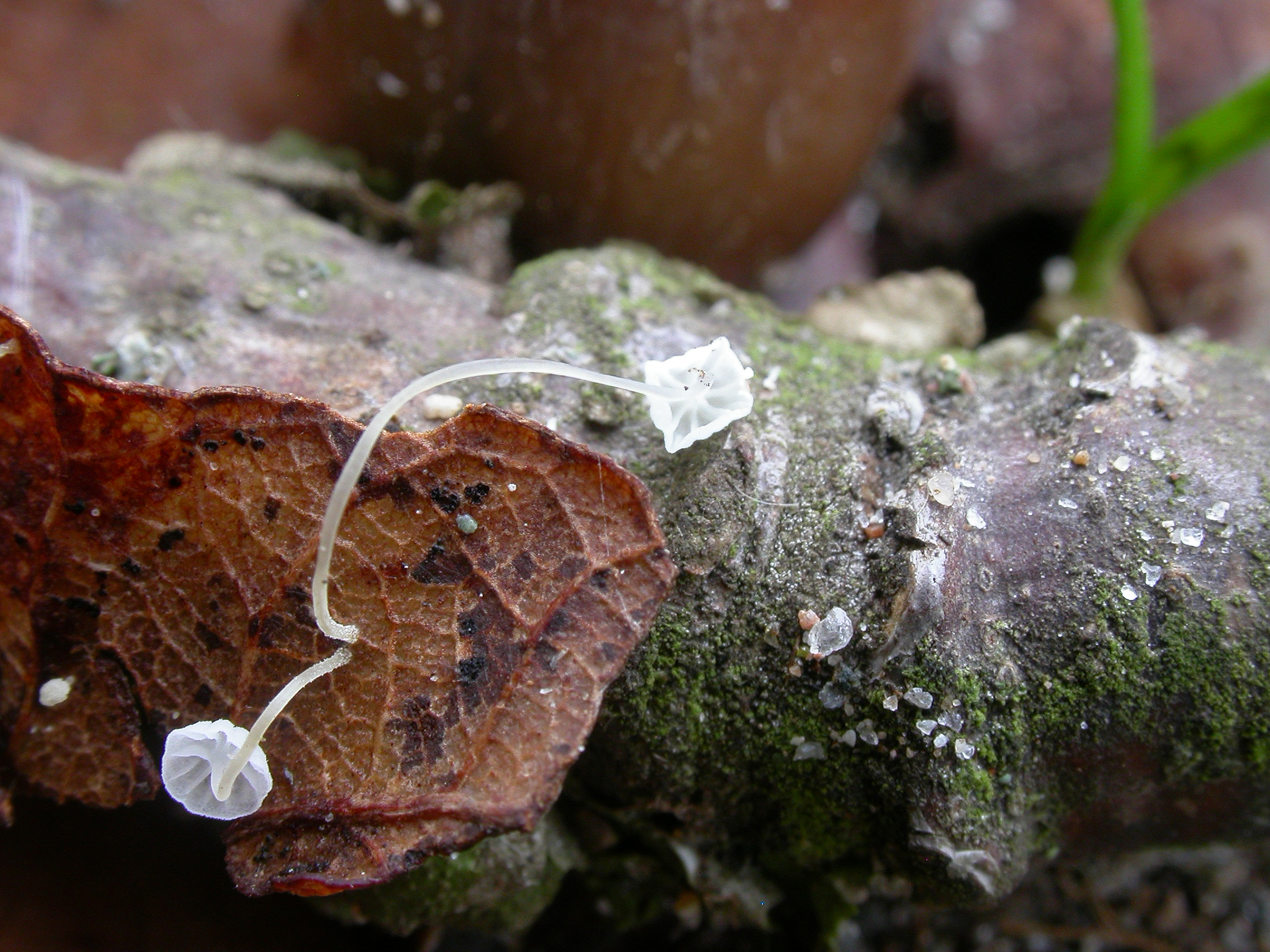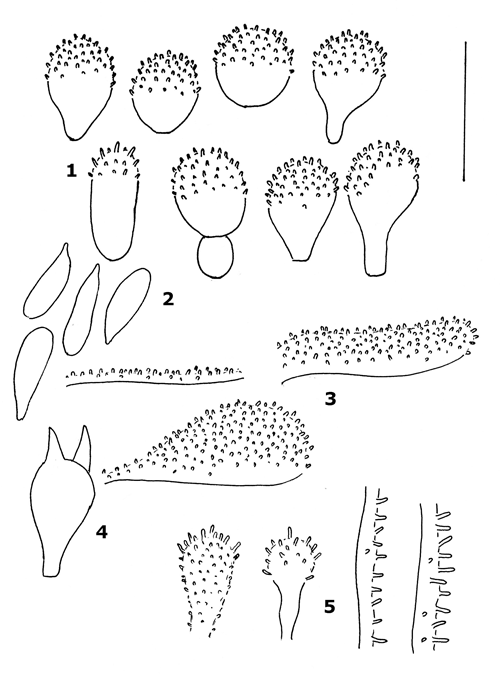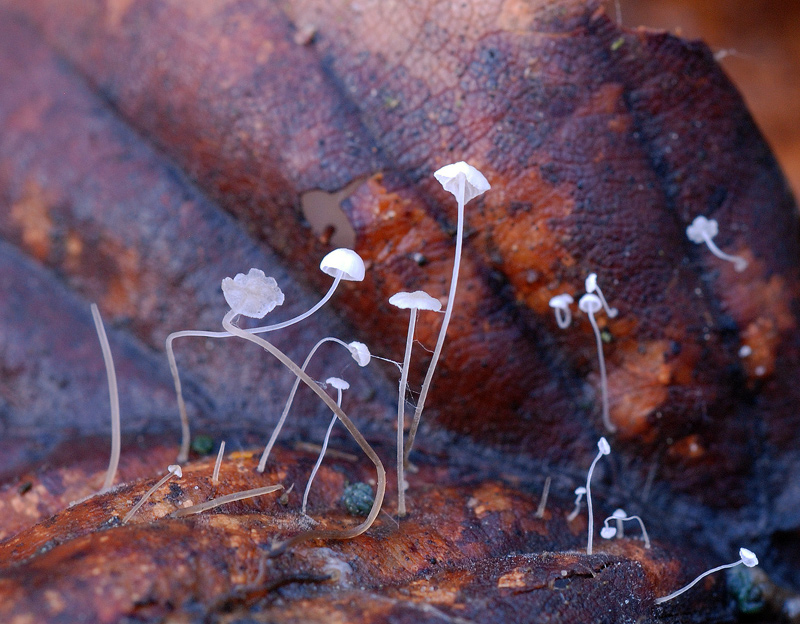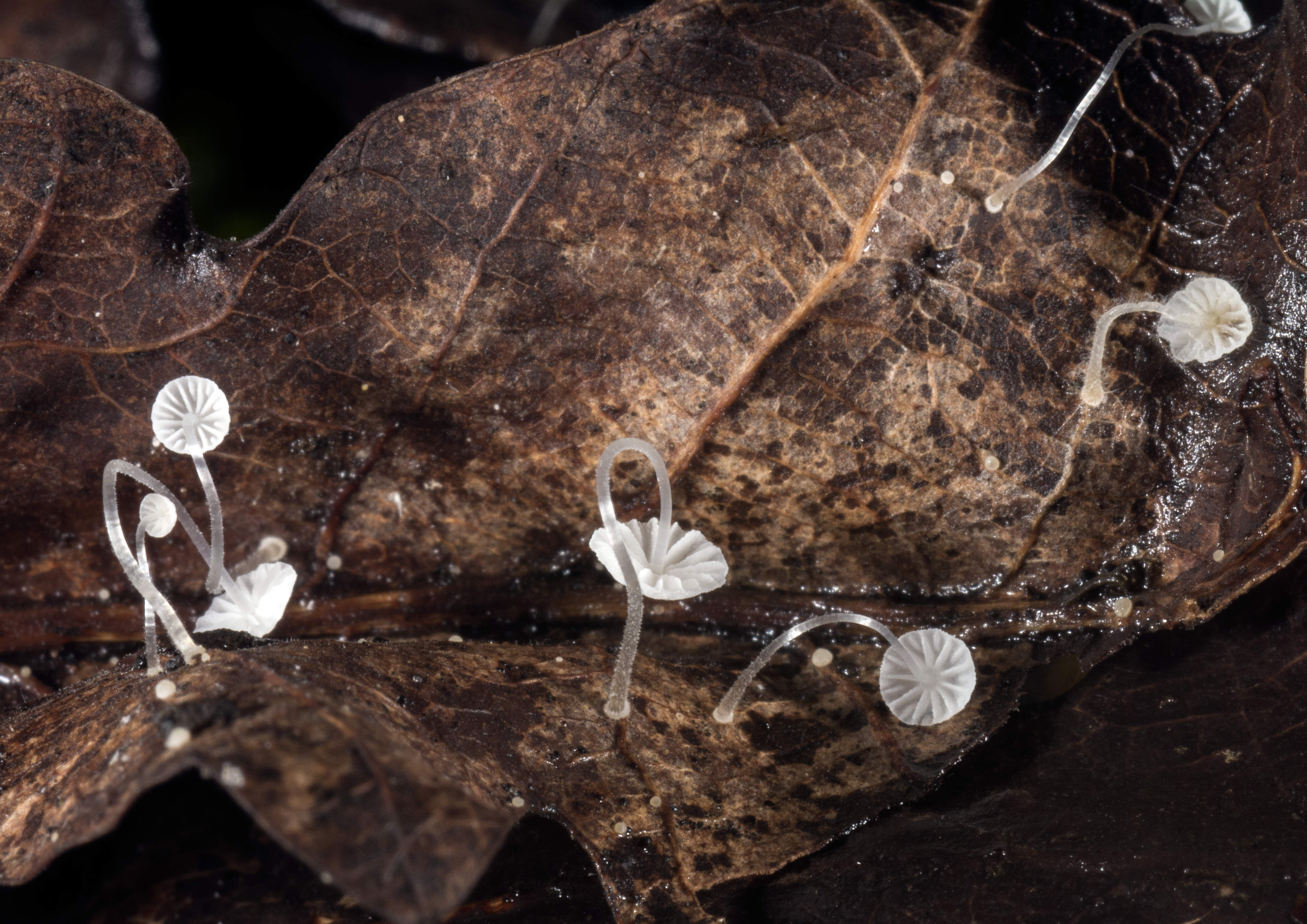Mycena polyadelpha
Mycena polyadelpha
Description
1. Cheilocystidia, 2. Spores, 3. Hyphae of the pileipellis, 4. Basidium, 5. Hyphae of the cortical layer of the stem and caulocystidia.
Cap 0.5-2.5 (-4) mm across, hemispherical, parabolical or convex, sometimes somewhat depressed, sulcate, hardly striate, puberulous or granular puberulous, more or less glabrescent, very thin, translucent in parts, white. Gills (0-)4-8(-11) reaching the stem, often very narrow, broadly adnate but not always reaching the stem, the edge straight to concave, white. Stem 5-50 x 0.1-0.2 mm, cylindrical, equal, pruinose, glabrescent for the greater part, but puberulous at the base, watery white to white, occasionally somewhat brownish at the base, generally insititious. Odour none. Basidia 15-18 x 8-10 µm, broadly clavate, 2- or 4-spored. Spores (4-spored) 9-11.8 x 3.5-5 µm, Q = 1.9-2.4 or (2-spored) 10-13.5 x 3.5-5 µm, Q = 2.2-3.2, Qav ˜ 2.6, elongated pip-shaped, sometimes almost cylindrical, amyloid. Cheilocystidia 15-27 x 8-15.5 µm, clavate, obpyriform, subcylindrical to subglobose, covered with numerous, evenly spaced, warts or short excrescences, 1-2 µm long. Pleurocystidia absent. Lamellar trama dextrinoid. Hyphae of the pileipellis 2.5-20 µm wide, densely covered with warts, with more or less inflated terminal cells. Hyphae of the cortical layer of the stem 1.8-5 µm wide, covered with cylindrical excrescences 1-5 µm long. Caulocystidia 5-16 µm wide, clavate, covered with narrow, cylindrical excrescences. Clamps present in all tissues in 4-spored form; absent in 2-spored form.
Ecology and distribution
On fallen, decaying leaves of Quercus. Also reported on leaves of Fagus. Late autumn. Rare in South Norway, but probably overlooked.



